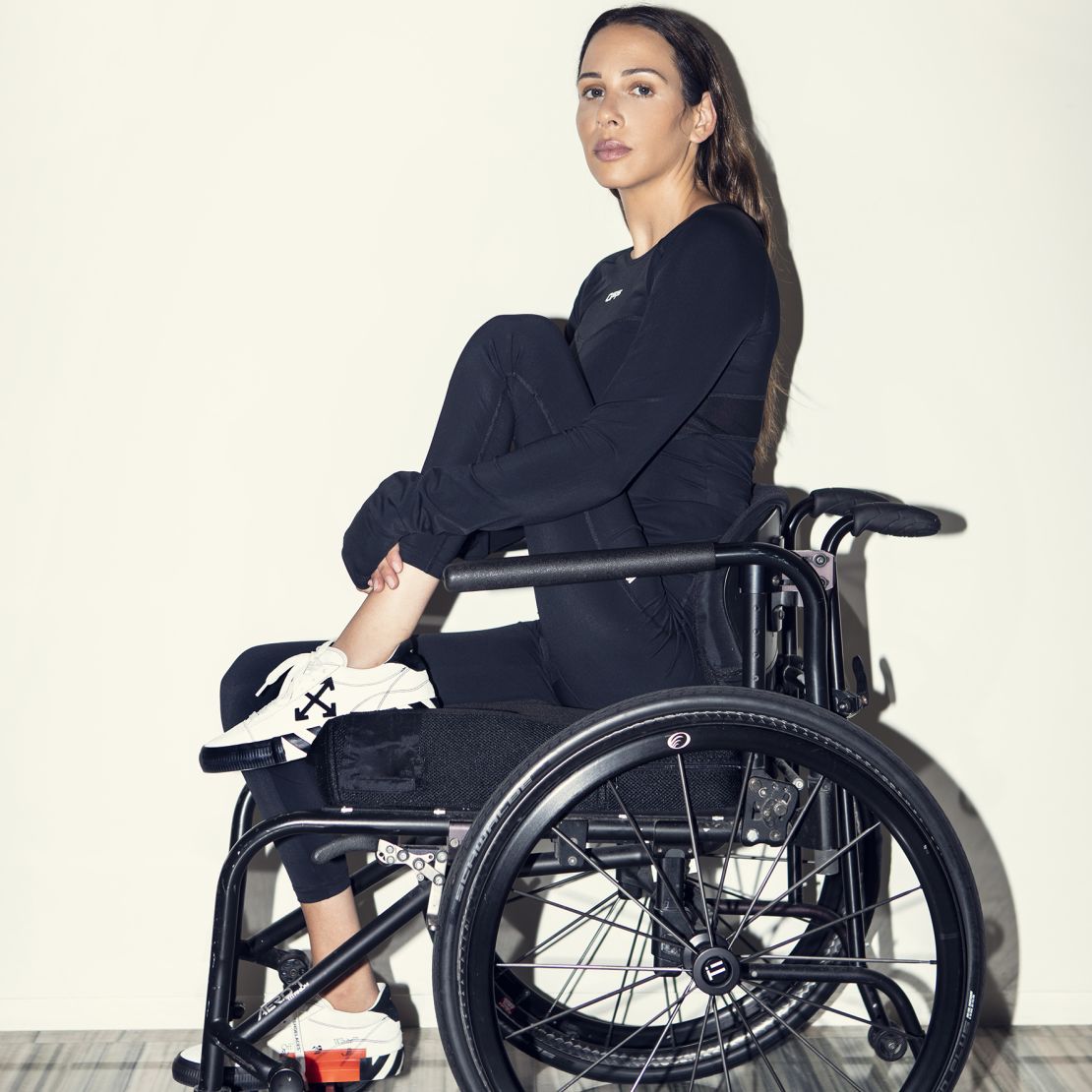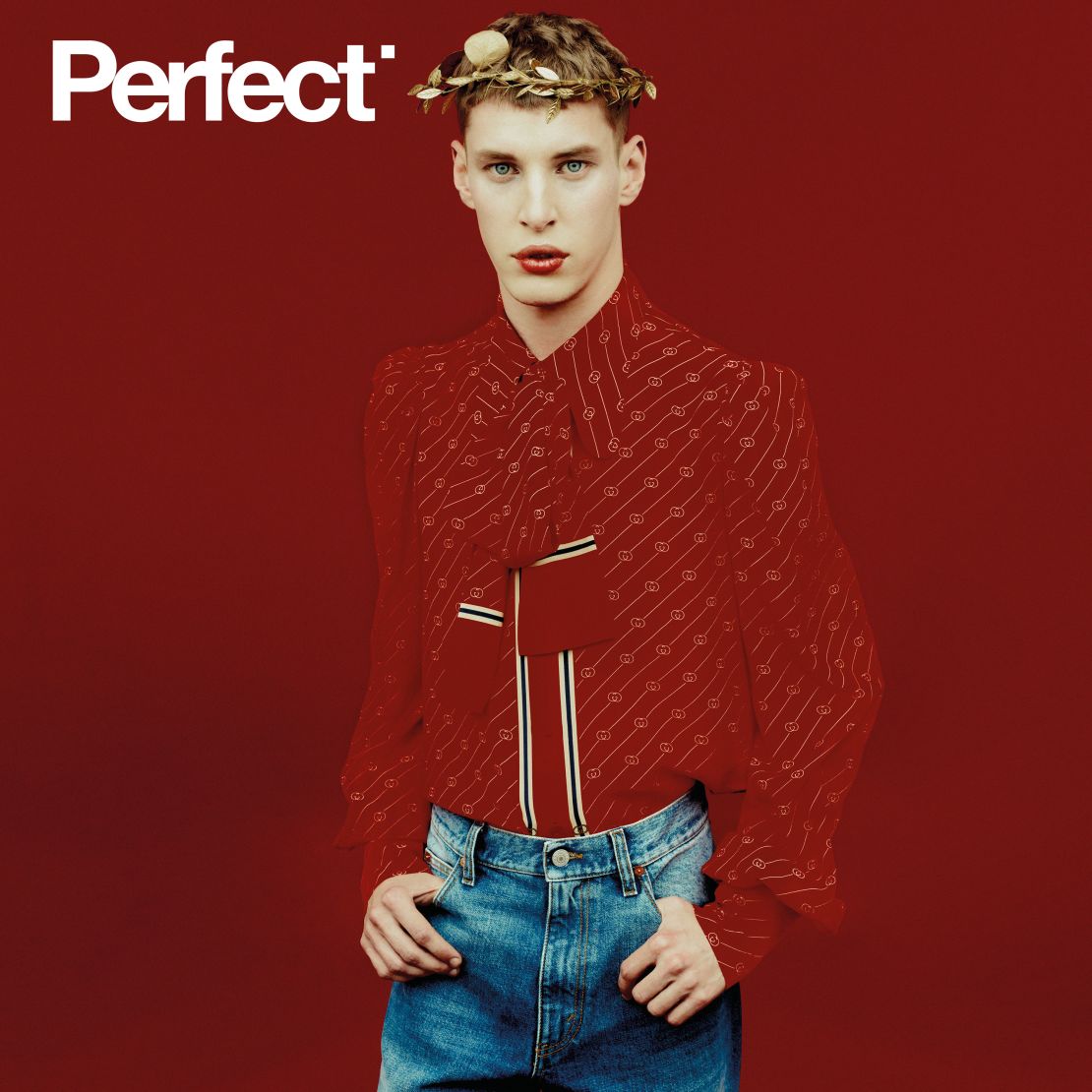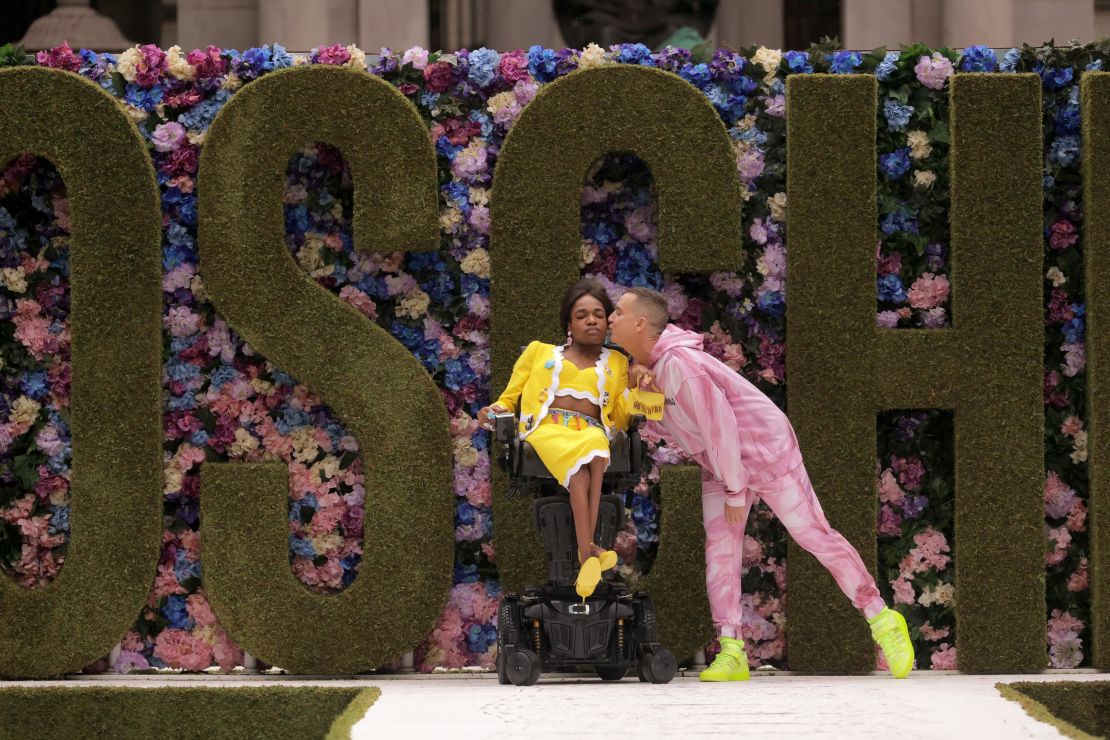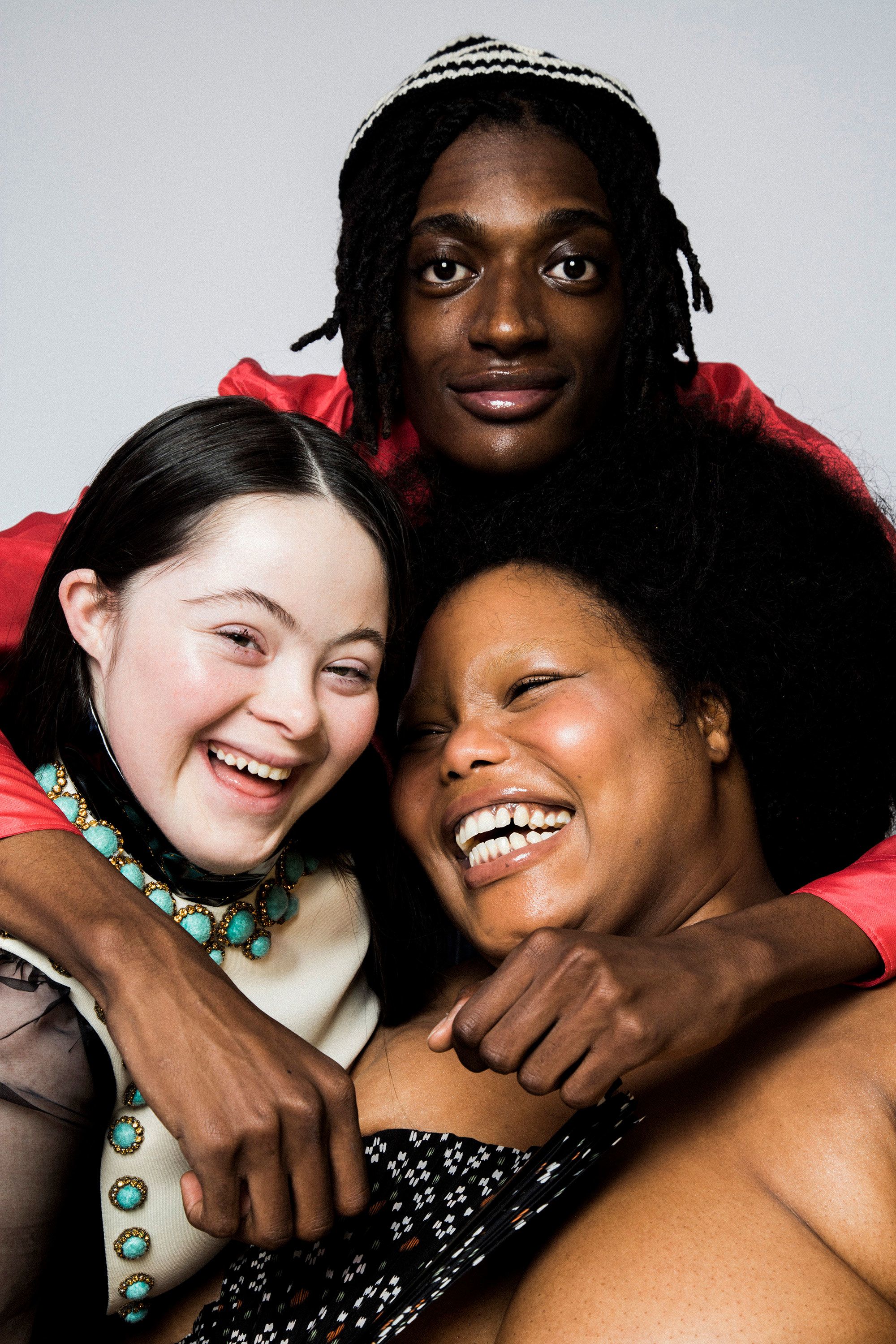Editor’s Note: Lottie Jackson is a writer, editor and disability activist. Her work takes a critical look at the stigmas surrounding disability, calling for greater inclusion in fashion, beauty and wider society.
This story is part of CNN Style’s ongoing project, The September Issues: A thought-provoking hub for conversations about fashion’s impact on people and the planet.
In February last year, Jue Snell stood in line with hundreds of models all vying for a slot on the runways of London Fashion Week. The casting had been held by Fashion Scout, an independent agency that organizes fashion shows for emerging designers. But the frisson of excitement faded to devastation when Snell approached the audition table.
“What is that?” a casting agent reportedly said, gawking at her amputated lower left arm. “No, move on.”
The ugly face of ableism had interrupted the scene, with another casting agent allegedly adding: “We don’t do disabled, move on.”
In an industry obsessed with physical appearances and beauty standards that idolize able-bodiedness, prejudice – though not always as blatant as that recounted by Snell – has always been part of the casting process. Aesthetic taste often becomes a smokescreen for ableism, leaving discrimination unquestioned.
When the incident was first reported by The Times in June, Fashion Scout provided the newspaper with a statement apologizing for the “discrimination and unfairness” experienced by Snell at the event. Without disclosing who had made the alleged comments, the agency added that designers select their own models during the process.
Confirming details of the incident to CNN, Snell said she was never contacted directly by Talent Scout. She added that other casting agents can be “very vocal about their disgust for people with disabilities.”
Snell’s experiences lay bare a systemic exclusion of disabled people that has existed in the fashion industry since its inception. And while the sector has pushed for greater diversity in recent years by opening its doors to historically marginalized groups, this has rarely included people with disabilities. Around 15% of the world’s population live with disabilities, making them “the world’s largest minority” according to the World Health Organization, yet a 2016 study by Lloyds Banking Group found that they accounted for only 0.06% of the people featured in UK advertisements.
In 2017, Laura Johnson and Zoe Proctor – a social worker and a performing arts teacher who works with young adults with disabilities, respectively – set up a specialist modeling agency to tackle this representation gap. Today, Zebedee Management represents over 500 models across Europe and America, including Snell.

“Hopefully now, due to our hard work, the percentage (of people with disabilities in fashion advertising) is higher,” said one of the agency’s bookers, Dominic Browning, via email, adding: “There is no reason why someone can’t be beautiful or luxurious whilst being disabled.”
For Cecilia Adamou, a model on Zebedee Management’s roster, “Disabled people must stop being seen as the ‘other’ or different.”
“The reason that disability is being ignored within the diversity conversation is that it makes people uncomfortable,” she said in an email. “A lot of this is due to a lack of education about disability and the pure lack of exposure.”
As someone with scarring across her chest and torso following a heart and kidney transplant, Adamou wants to help redefine scars as symbols of empowerment and resilience, not shame. “Disability is seen to abled-bodied people as something that is unpleasant to look at, something they hope they never have the misfortune of enduring or something that they should feel sorry for,” she said.
“Disability and visible differences shouldn’t be represented because they have to be, but because brands want to showcase (their) beauty.”

Time for change?
In the past year, the resurgence of the Black Lives Matter movement appears to have turbo-charged fashion’s commitment to diversity and inclusion. The upheaval caused by Covid-19 may also have prompted brands to realign their priorities, with notions of beauty and desirability feeling unimportant – trivial even – in the face of widespread suffering.
Consumers now demand more from brands when it comes to community and social justice. And the stakes are high: Designers who stick to traditional model archetypes, failing to showcase people who symbolize positive change, risk losing relevance.
Disability has, at last, been part of these calls for inclusivity. Last year, Gucci shot a trailblazing beauty campaign starring Ellie Goldstein, a model with Down syndrome. It was revitalizing and radical; a masterful rejection of the archaic beauty mores that have long erased disability. The campaign’s success – including a photo of Goldstein that has become one of Gucci’s most popular Instagram posts, with over 850,000 likes to date – has generated awareness of both the power and commercial potential of disabled models.
Elsewhere, Aaron Rose Philip became the first Black, transgender and disabled model to front a Moschino campaign, before hitting the label’s New York Fashion Week runway earlier this month; Haleigh Rosa starred in an Off-White activewear campaign, where she posed in her wheelchair wearing swimwear; and Savage X Fenty hired Lyric Mariah Heard, who has a visible limb disability, to model lingerie. Each move helped set a new precedent for inclusive casting.
But is the industry really committed to lasting change? Or are we seeing tokenistic posturing and yet more performative activism for financial and reputational gain?
Ryan Zaman, a 25-year-old model with cerebral palsy, belongs to a rising generation of activist models representing their communities with sensitivity and pride. Earlier this year, he was chosen alongside Kate Moss to appear on the inaugural cover of Perfect Magazine.
“I am in a very privileged position as a model, especially as a model with a disability, so it’s imperative that I use my privilege in the best way that I can – to create conversation, raise awareness and help other disabled people gain opportunities,” he said.
However, cultivating a modeling career tied to your minority status comes with the risk that your uniqueness is exploited to capture headlines, Zaman said. “(Tokenism) is something that I am very conscious of,” he said. “I have a very strong grip on where my own personal lines are when it comes to what I am willing to do or not do.”

However, Zaman added that it can be “liberating” when everyone on a shoot is aware of his disability: “I don’t have to justify myself or explain if I need some extra help with something or to sit down for a second, and that’s amazing.”
Although the idea of tokenism has negative connotations, Zaman pointed out that it has also helped disabled creatives showcase their talents and shape projects. “Utopia,” he said, would be “where everything is authentically inclusive and people are not only given a seat at the table, but their voices are listened to and their unique perspective is valued.”
Community-led change
Brands can no longer ignore the fact that behind-the-scenes diversity is as important as that promoted on runways and in ads. From ateliers to boardrooms, disabled employees are key to ensuring that the drive for representation is sensitive and authentic, not exploitative.
Yet, barriers remain. Entry level jobs, already renowned for long hours, inflexible working schedules and short-term contracts, are often inaccessible to applicants with disabilities. A recent inclusivity report by a group of British parliamentarians quoted one of the study’s participants as saying: “I’ve never, in 18 years in the industry, come across anyone, anywhere, with an obvious disability.”
Apprenticeships and schemes aimed at getting people with disabilities into the workforce are still urgently required. In January, Prada became the first luxury fashion company to join The Valuable 500, an initiative aiming to close the disability employment gap and transform businesses to address the needs of disabled people. While Prada’s exact plans are yet to be outlined, Women’s Wear Daily reported that the label is developing a long-term program that begins with employing more staff with Down syndrome in its Italian stores.

Likewise in 2020, luxury conglomerate LVMH signed the International Labor Organization Global Business and Disability Network Charter, which promotes the recruitment of people with disabilities in the corporate world. An accessibility program launched in 2018 by one of LVMH’s brands, the beauty giant Sephora, has succeeded in getting more disabled people into work – they now represent 9% of the workforce at the retailer’s distribution centers (including 30% at its Mississippi facility).
This signals a growing awareness about the importance of disability representation at all levels of the industry. But challenges remain across the fashion ecosystem, from retail to product design.
Madison Lawson, an American journalist with muscular dystrophy, has for instance written about her experience at New York Fashion Week for Vogue, where she revealed a host of accessibility issues. At one point, she wrote, her personal assistant had to throw her over her shoulder and drag her wheelchair up the steps. The organizing body of New York Fashion Week, the CFDA, did not respond to CNN Style’s request for a response to Lawson’s experience.
And even online shopping can pose accessibility challenges when retailers fail to consider the needs of disabled people. For example, not all e-commerce sites feature adequate screen reading functionality for visually impaired customers.
“Featuring disabled models becomes tokenistic when brands won’t commit to exploring how they can make their products or website accessible,” said Christina Mallon, chief brand officer at Open Style Lab, a design incubator at New York’s Parsons School of Design.
The rise of adaptivewear
More inclusive design could, despite the investment required, lead to considerable financial gain for brands. A 2020 report by the Return on Disability Group found that disabled people in the US, Canada and Europe have a combined an annual disposable income of over $1.9 trillion.. But most off-the-rack garments are not designed for disabled bodies, making them uncomfortable or unwearable for some people with conditions like multiple sclerosis or autism.
Adaptivewear – clothing created specifically for people with disabilities – is an emerging market expected to reach over $392 billion by 2026, according to a report by Coherent Marketing Insights.
At the design level, disabled perspectives must be sought at every stage, Mallon said. Whether designers are fabricating magnetic buttons for independent dressing or building easy-to-navigate websites, it is “critical to consult the disabled community,” she added, and failing to do so may result in products that are ergonomically unsuitable and commercially undesirable.
Brands like Nike, Ugg and Tommy Hilfiger have all launched adaptivewear products in recent years. Inclusive design workshops are also reportedly underway at LVMH, where two of the group’s labels, Louis Vuitton and Marc Jacobs, have been working with Runway of Dreams, a non-profit organization working to advance the adaptivewear movement.

Beauty brands have also been creating disability-friendly products, including easy-grip brushes for people with visual impairments or limited dexterity. Guide Beauty, for instance, was launched by professional makeup artist Terri Bryant following her Parkinson’s disease diagnosis in 2015. Her hand-steadying tools and easy-to-open packaging are based on seven “universal design” principles, established by a group of designers and architects in the late 1990s, that encourage designs that can be understood and accessed by people of all ages and abilities. She begins by accommodating those with greatest needs and, in doing so, invents better products for everyone.
“It starts in the design phase,” explained Bryant over email. “Who do we consider in our product’s design? How far does your lens of inclusion reach? When we engage and surround ourselves with as many different points of view and lived experiences as possible, we build better products and a better culture.”
Empathy and collaboration are where real inclusion lies. This openness can help embed disability in all aspects of the fashion industry – to the point where a disabled model no longer garners headlines.
“I hope we can one day get to a point where … you are judged only on your skill,” Zaman concluded. “That you are a great model, photographer, videographer, stylist, et cetera, who happens to have a disability.”



